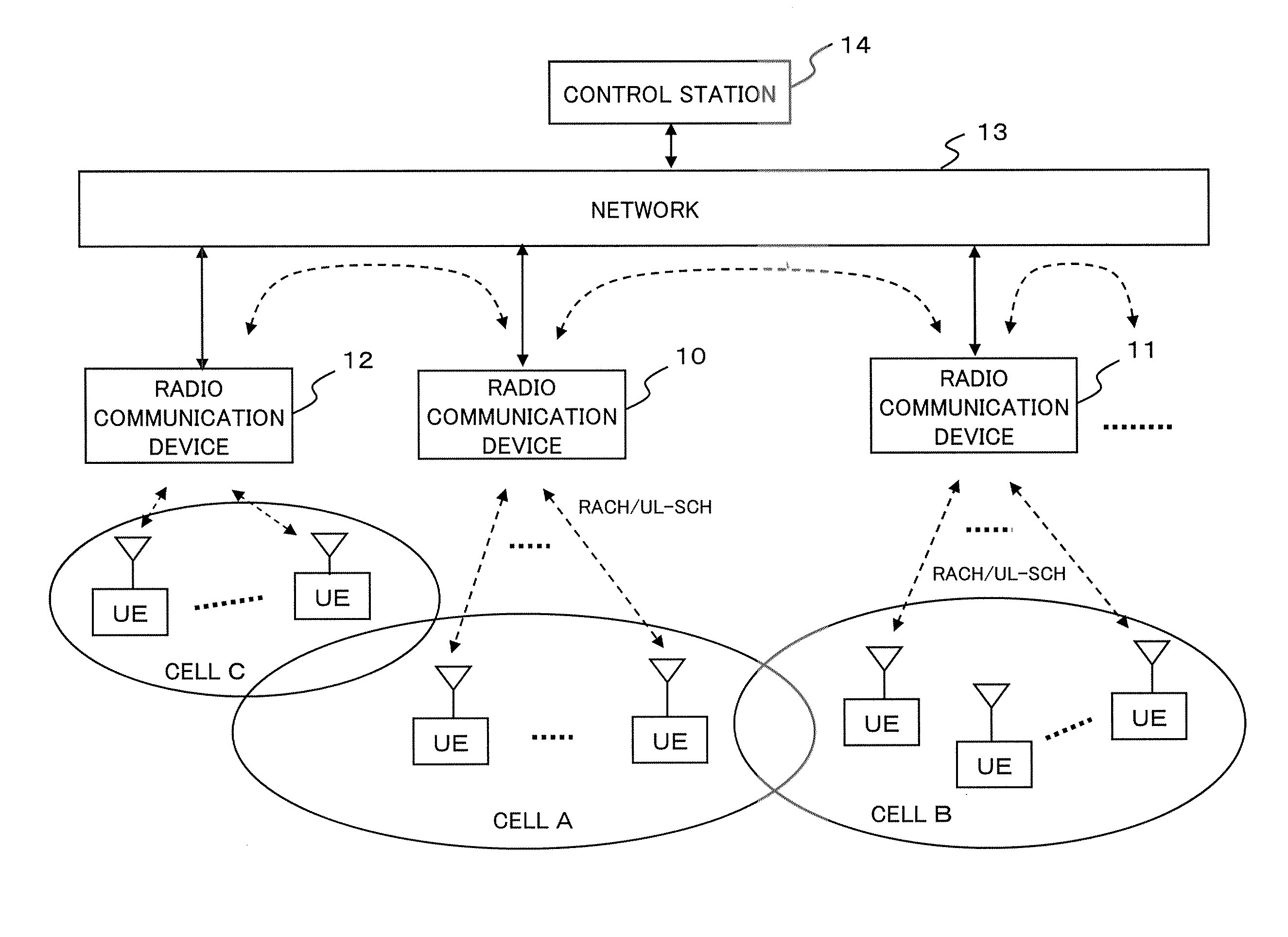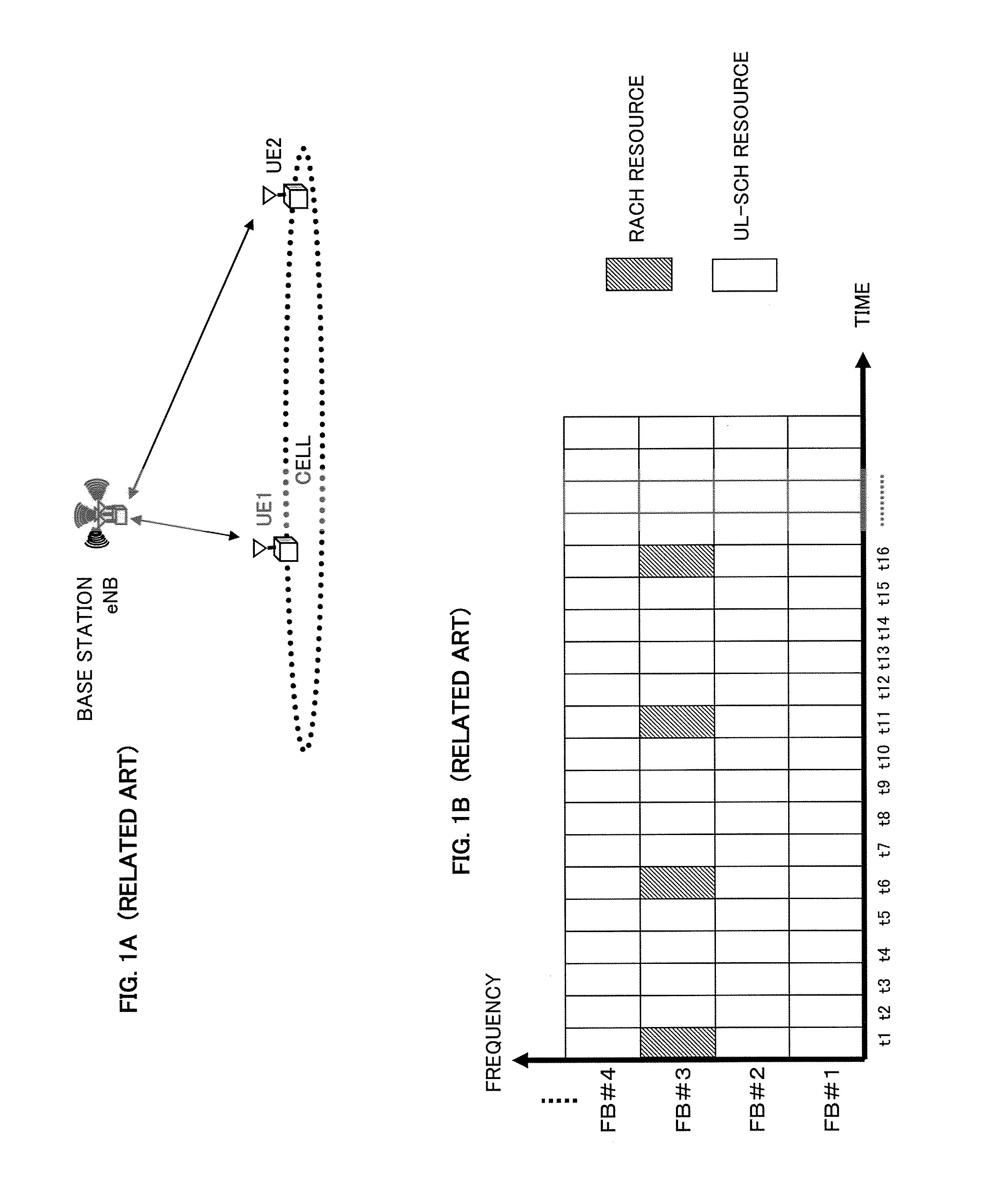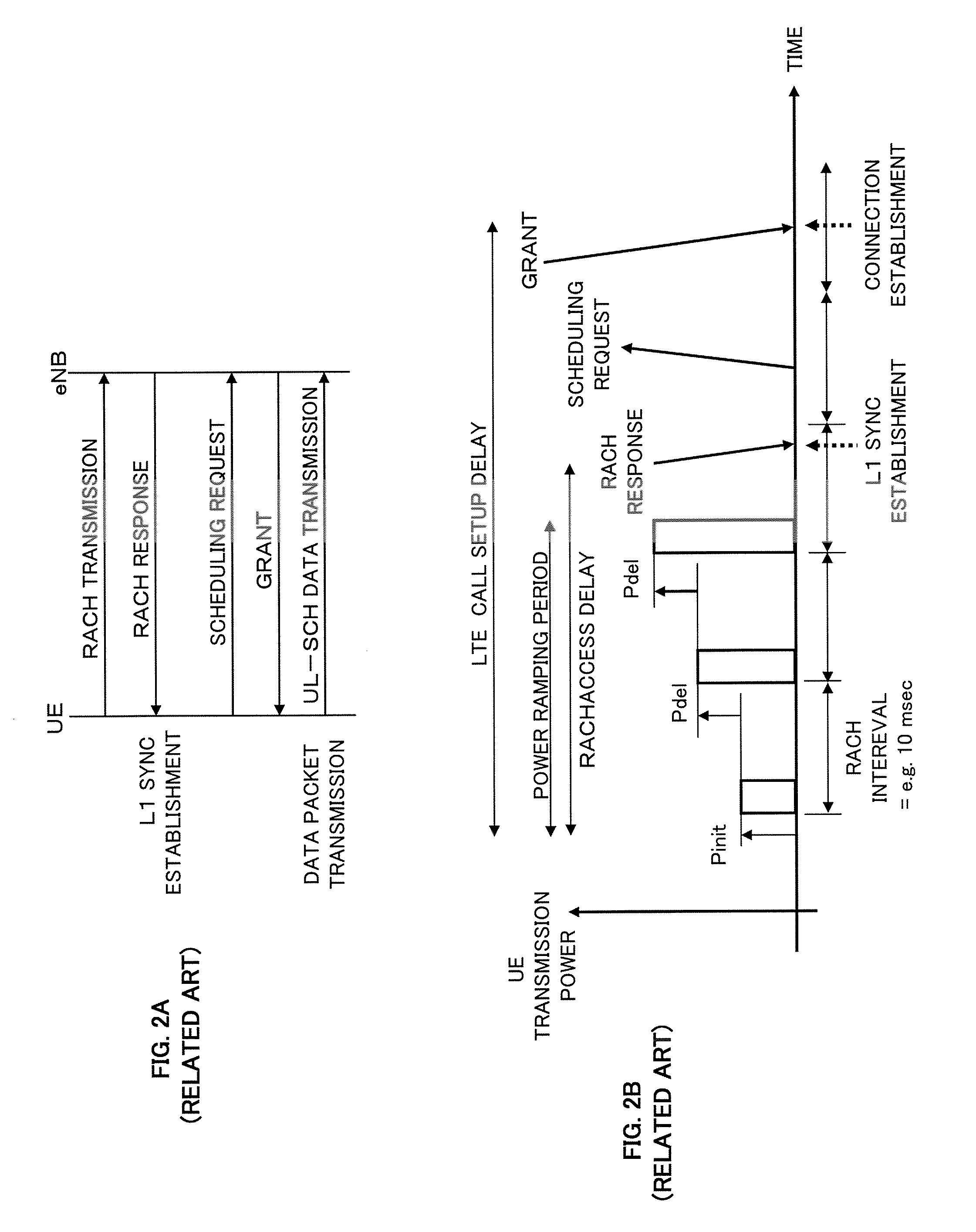Control method and device of uplink access transmission power in radio communications system
- Summary
- Abstract
- Description
- Claims
- Application Information
AI Technical Summary
Benefits of technology
Problems solved by technology
Method used
Image
Examples
first exemplary embodiment
1.1) First Exemplary Embodiment
[0049]FIGS. 5A and 5B show schematic time charts for describing the outline of a transmission power control method according to a first exemplary embodiment of the present invention. FIG. 5A shows an example of the average RACH access delay varying with time. FIG. 5B shows the initial RACH transmission power offset varying with time, which is controlled based on the average RACH access delay.
[0050]A target RACH access delay (TargetRachDelay), a default initial RACH power P0, and a maximum initial RACH transmission power offset (MaxInitRachP0) are preset on each of radio communication devices respectively controlling cells within a network. These parameters, which are set depending on each cell, may be set by a control station (such as an operation and management server of the network, or a radio resource control server) controlling each radio communication device, or may be set when each radio communication device is installed. For example, the target ...
second exemplary embodiment
1.2) Second Exemplary Embodiment
[0065]FIGS. 6A and 6B shows schematic time charts for describing the outline of a transmission power control method according to a second exemplary embodiment of the present invention. FIG. 6A is a time chart showing an example of the average RACH access delay varying with time, and FIG. 6B is a time chart showing the initial RACH transmission power offset varying with time which is controlled based on the average RACH access delay. Note that the target RACH access delay (TargetRachDelay) and the average RACH access delay (AvRachDelay) shown in FIG. 6A are similar to those described in the first exemplary embodiment, and therefore description thereof will be omitted.
[0066]According to the second exemplary embodiment, when a radio communication device sets or updates the initial RACH transmission power in its own cell, the radio communication device notifies a new initial RACH transmission power offset to a radio communication device controlling a neig...
third exemplary embodiment
1.3) Third Exemplary Embodiment
[0073]FIGS. 7A and 7B shows schematic time charts for describing the outline of a transmission power control method according to a third exemplary embodiment of the present invention. FIG. 7A is a time chart showing an example of the average RACH access delay varying with time, and FIG. 7B is a time chart showing the initial RACH transmission power offset varying with time which is controlled based on the average RACH access delay. Note that the target RACH access delay (TargetRachDelay) and the average RACH access delay (AvRachDelay) shown in FIG. 7A are similar to those described in the first exemplary embodiment, and therefore description thereof will be omitted.
[0074]According to the third exemplary embodiment, when a radio communication device sets or updates the initial RACH transmission power in its own cell, the radio communication device notifies a new initial RACH transmission power offset to a radio communication device controlling a neighbo...
PUM
 Login to View More
Login to View More Abstract
Description
Claims
Application Information
 Login to View More
Login to View More - R&D
- Intellectual Property
- Life Sciences
- Materials
- Tech Scout
- Unparalleled Data Quality
- Higher Quality Content
- 60% Fewer Hallucinations
Browse by: Latest US Patents, China's latest patents, Technical Efficacy Thesaurus, Application Domain, Technology Topic, Popular Technical Reports.
© 2025 PatSnap. All rights reserved.Legal|Privacy policy|Modern Slavery Act Transparency Statement|Sitemap|About US| Contact US: help@patsnap.com



